How to Choose Vegetables for Your Garden
This post may contain affiliate links, which means that I may receive a commission if you make a purchase using these links. As an Amazon Associate I earn from qualifying purchases.
Feeling overwhelmed by seed catalogs? Learn how to choose the best vegetables to grow in your garden based on your space, climate, goals, and favorite foods.

Planning your vegetable garden can feel exciting and a little overwhelming. You flip through seed catalogs and suddenly want to grow everything. Before long, your wish list is longer than your growing season.
I’ve been there. Even after years of gardening, I still get carried away marking favorites in seed catalogs. But over time, I’ve learned that a little planning and a few simple questions make all the difference. Here’s how to narrow down your options, choose vegetables that fit your goals and space, and enjoy a productive, stress-free garden season.
1. Start with Your Goals
Before choosing what to grow, take a moment to think about why you want a garden in the first place. Everyone’s motivation is a little different, and understanding your goals will help guide the vegetables, varieties, and layout you choose.
Are you hoping to:
- Enjoy fresh, homegrown food through the season, full of flavor you can’t find at the grocery store?
- Save money on groceries by growing your own produce?
- Grow organically and avoid pesticides so you can feed your family clean, healthy food?
- Preserve and store food for winter by stocking your pantry and freezer with your harvest?
Those are wonderful reasons to start, but there are so many more:
- Connect with nature and reduce stress: Gardening is deeply grounding. Spending time outside, tending plants, and watching things grow has a calming rhythm that’s good for both mind and body.
- Teach children where food comes from: A vegetable garden is one of the best classrooms. Kids who help grow vegetables are more likely to eat them, and remember those lessons for life.
- Be more self-sufficient: Even a small garden helps you rely less on the grocery store and gives you a sense of independence and security.
- Enjoy better-tasting food: Once you’ve eaten a tomato still warm from the sun, there’s no comparison. Homegrown vegetables are fresher, more flavorful, and picked at their peak.
- Reduce food waste: You can harvest only what you need, share extras with friends and neighbors, or preserve the rest for later.
- Create beauty and community: A thriving garden adds color, life, and purpose to your yard and often sparks connections with neighbors who stop by to chat about what you’re growing.
Whatever your reason, keep it in mind as you plan. Your “why” will help you stay focused and motivated when weeds sprout, weather shifts, or time runs short. If you need a little more inspiration, check out 10 Reasons to Grow Your Vegetable Garden to remind yourself why gardening is so rewarding.
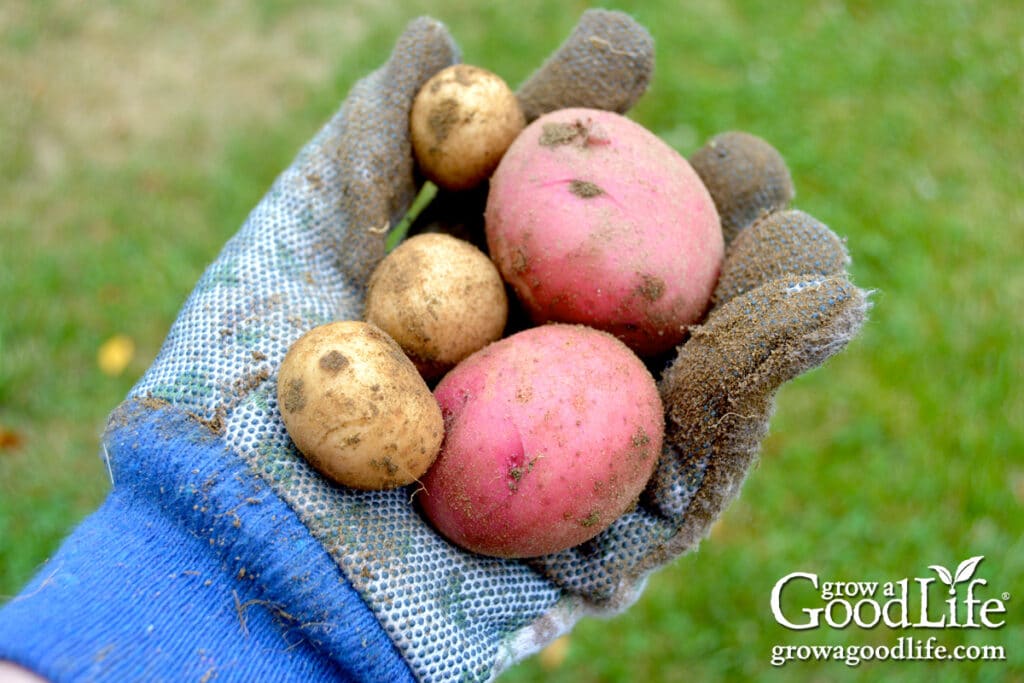
2. Choose Vegetables You Actually Eat
When the seed catalogs arrive, it’s easy to get swept up in the excitement and circle every variety that catches your eye. I still find myself doing it every year. But before you know it, your list has outgrown your garden space. The best way to narrow things down is simple: grow what you actually eat.
There’s no sense in planting kohlrabi or eggplant if no one in your household enjoys them. Focus on the vegetables that show up on your plate week after week.
Start by thinking about your family’s favorite meals and grocery habits:
- What produce do you buy most often? Those are perfect starting crops.
- What do you always wish you had more of? (For me, it’s fresh herbs, I use them daily.)
- What do you tend to waste or forget about? Maybe skip those this season.
Growing what you already love to eat keeps gardening practical and rewarding. Every harvest feels useful, and you’ll waste less because your crops go straight from the garden to your table.
- If you love fresh salads, consider filling your garden with quick-growing, rewarding crops like lettuce, spinach, cucumbers, and cherry tomatoes.
- If you’re a salsa lover, make space for tomatoes, peppers, onions, and cilantro. Check out this article to plan and plant a raised bed with all the salsa ingredients: How to Grow a Salsa Garden.
- If hearty soups and stir-fries are staples in your kitchen, grow carrots, onions, celery, green onions, and snow peas.
- If you want to preserve tomato sauce, plant plenty of paste tomatoes along with onions, garlic, and herbs.
As you gain confidence, feel free to branch out and try something new each year. Experimenting keeps gardening fun, but let your tried-and-true favorite vegetables form the backbone of your garden plan.

3. Match Crops to Your Growing Conditions
Every garden has its own personality. Sunlight, soil, wind, and microclimates shape what grows best. Taking a little time to understand your conditions now can save you frustration later.
Climate
Start with your growing zone and your first and last frost date. These tell you how long your typical growing season lasts and what temperature extremes your plants must handle. If you garden in the North, look for short-season or cold-tolerant varieties that mature quickly before fall frost. Southern or coastal gardeners should seek heat-tolerant and bolt-resistant crops that hold up in summer warmth.
If you’re unsure, check the USDA Plant Hardiness Zone Map or talk with local gardeners to see which varieties perform well in your area.
Soil and Drainage
Healthy soil is the foundation of every successful garden. Observe whether yours tends to stay soggy after rain or dries out quickly. Root crops, such as carrots and beets, require loose, well-drained soil, while leafy greens and brassicas (broccoli, brussels sprouts, cauliflower) prefer a slightly moister environment.
If your soil is heavy clay, consider building raised beds filled with compost-rich soil to give roots room to breathe. Amending with organic matter each year will gradually improve structure and fertility. These 7 Simple Techniques to Improve Garden Soil will help you build richer, healthier soil over time.
Sunlight
Sun exposure plays a huge role in plant health and yield. Most vegetables need at least six to eight hours of direct sunlight per day to thrive.
Fruiting crops, such as tomatoes, peppers, cucumbers, and squash need full sun for strong growth and good flavor. Leafy greens, herbs, and root vegetables tolerate some shade, especially during the heat of summer. In fact, partial shade can help extend the growing season for tender greens.
If your garden doesn’t receive full sun, explore 30+ Vegetables That Grow in Shade for ideas on what to plant in cooler or sheltered spots.

Water and Weather Patterns
Think about your rainfall and watering habits. If you often experience dry spells, consider focusing on drought-tolerant crops such as beans, peppers, okra, and Swiss chard. For humid regions where fungal issues are common, look for disease-resistant varieties of tomatoes, cucumbers, and squash.
Mulching around plants helps regulate soil moisture, suppresses weeds, and protects against temperature swings. Valuable for any climate. Learn more about why mulch makes such a difference in 5 Ways Organic Mulch Helps Your Vegetable Garden.
Wind and Microclimates
Even within a single yard, conditions can vary. Fences, trees, and buildings create pockets of shelter or shade that influence temperature and airflow. Use these microclimates to your advantage:
- Plant heat-loving crops near a sunny wall that radiates warmth.
- Grow delicate greens in partial shade or a protected corner to prevent wilting.
- Use taller crops, such as corn or sunflowers, as natural windbreaks for shorter plants.
Local Knowledge
Finally, remember that gardening is local. Ask neighbors what grows well for them, visit your local farmers’ market, or reach out to your Cooperative Extension office for regional planting guides. Gardeners are generous by nature and most love sharing their tips and favorite varieties.
Once you’ve figured out which crops fit your conditions, it’s time to start planning your seed order. Here’s How to Choose and Buy Seeds for Your Garden.
4. Grow High-Value and High-Impact Crops
If space or time is limited, focus on vegetables that give you the most reward for your effort, such as crops that are expensive to buy, have exceptional flavor when homegrown, or produce heavily in a small area. Growing high-value vegetables makes your garden more productive and cost-effective, regardless of its size.
Think in Terms of Value
Some vegetables simply make more sense to grow at home. Salad greens, herbs, heirloom tomatoes, peppers, and garlic cost far more in the grocery store than they do to grow yourself.
For example, a small packet of quality lettuce seed costs less than a single container of organic salad mix. Yet, it can yield several pounds of greens over the course of the season.
Fresh herbs, such as basil, cilantro, parsley, and dill, are also high-value crops. You can snip what you need for cooking and dry or freeze the rest for later use in winter. Some are even perennial, such as oregano, mint, and thyme, which return every year.
Many herbs are simple to grow from seed (Try these 7 Herbs to Start from Seed), and they preserve beautifully when dried properly (How to Harvest and Dry Herbs for Storage).
Make the Most of Small Spaces
If you’re gardening in raised beds, containers, or a small backyard plot, look for compact or bush varieties that still yield generously. Bush beans, determinate tomatoes, patio cucumbers, and baby summer squash are perfect for smaller gardens.
You can also grow vertically by training peas, pole beans, and vining cucumbers up a trellis, freeing ground space for other crops.
Flavor Is Its Own Value
Sometimes, value isn’t just about cost savings, but also about quality. A sun-ripened tomato, a crisp cucumber picked just minutes before dinner, or a handful of freshly cut herbs taste better than anything shipped to a store.
If flavor is your goal, choose varieties bred for taste rather than shipping or shelf life. Heirloom tomatoes, sweet bell peppers, and tender salad greens are worth every inch of space they occupy.
Plan for Continuous Harvests
Choose crops that provide multiple pickings throughout the season, allowing you to harvest regularly instead of all at once.
- Cut-and-come-again greens: lettuce, spinach, kale, Swiss chard
- Steady producers: bush beans, cherry tomatoes, zucchini
- Succession crops: sow carrots, beets, and radishes every few weeks for a steady supply.
This approach keeps the garden productive, ensuring you always have something ready to harvest. For more ideas on staggering plantings and extending your harvest window, check out Succession Planting Tips to Maximize Your Harvest.

Preservation Value
If you enjoy canning or freezing, consider high-yield crops that preserve well. Tomatoes, peppers, onions, beans, and cucumbers are excellent for sauces, relishes, and pickles. Root vegetables, such as carrots and beets, store beautifully in a cool cellar or refrigerator for months.
Over the years, I’ve learned that a valuable crop isn’t always the most exotic or expensive. For me, that’s tomatoes for sauce, garlic for cooking year-round, and a few raised beds of herbs I snip daily and preserve for winter meals.
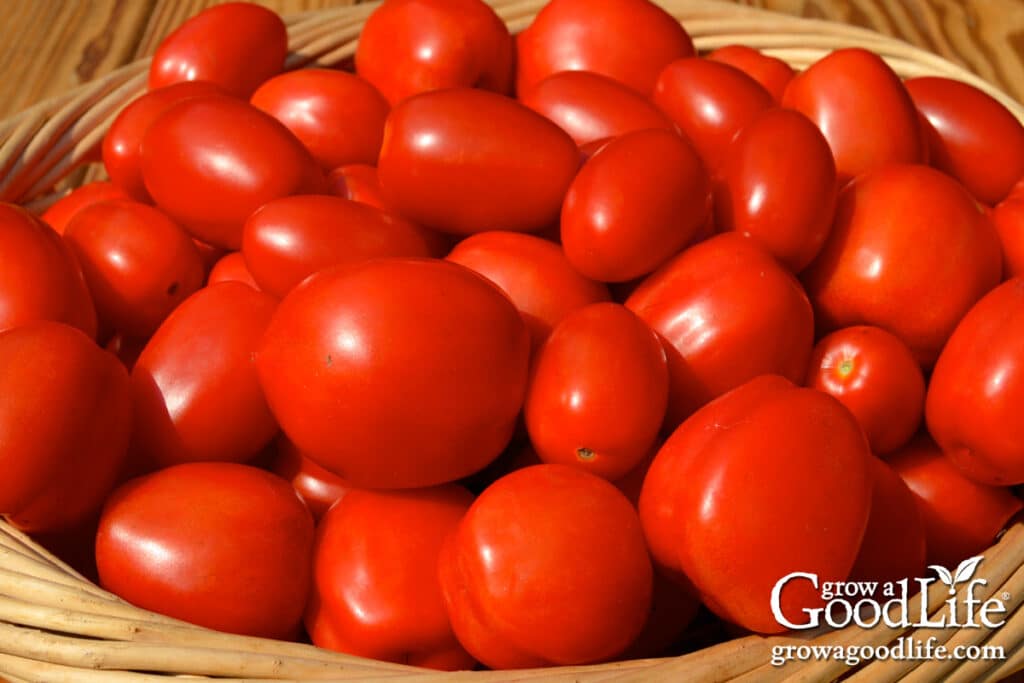
5. Start Simple with Easy-to-Grow Vegetables
It’s easy to dream big when planning a garden, but starting simple is the best way to ensure success. Whether you’re new to gardening or short on time, choose dependable crops that don’t need much fussing. These reliable performers will reward you quickly, boost your confidence, and keep you motivated to keep growing.
Begin with Low-Maintenance Crops
Some vegetables practically take care of themselves once planted. Leafy greens, radishes, beans, peas, zucchini, and cherry tomatoes are among the easiest to grow. They germinate quickly, mature fast, and keep producing for weeks.
Many of these crops are also forgiving if you forget to water or fall behind on weeding, a real gift during a busy season.
If you’re starting out, check out Easiest Vegetables to Grow for a list of beginner-friendly crops that will set you up for success.
Quick Rewards Keep You Inspired
Early success makes gardening more enjoyable. Fast-growing vegetables like lettuce, spinach, arugula, and radishes can be harvested just a few weeks after sowing. Watching those first crisp leaves or colorful roots appear is deeply satisfying and builds momentum for the rest of the season.
Choose Productive and Resilient Varieties
Some crops earn their keep by producing heavily with minimal effort. Bush beans, kale, Swiss chard, and zucchini are known for their abundance. Even a few plants can feed a family for weeks. If you have limited space, consider compact varieties like patio tomatoes, dwarf peppers, and container lettuce, which grow beautifully in pots on a deck or balcony.
Learn Through Doing
One of the joys of gardening is how much you learn along the way. Easy crops are forgiving teachers. They’ll still thrive even if your watering schedule isn’t perfect or your spacing is off. Each season brings small lessons that make the next one even better.
Start Small and Build Gradually
It’s tempting to plant every seed packet at once, but it’s better to start with a few manageable beds or containers. You can always expand once you understand how much time and care your garden truly needs. A small, thriving plot is far more rewarding than a large one that becomes overwhelming by midsummer.
Even after years of gardening, I still appreciate the dependable plants that never let me down. There’s comfort in harvesting a basket of beans or greens without worrying about pests or disease. Those simple successes are what make gardening enjoyable year after year.
As your garden expands, keep things manageable by focusing on efficiency. A few smart habits, such as mulching, watering deeply, and using raised beds can save time and effort. For more ideas, explore 7 Tips for a Low-Maintenance Garden to make your growing season smoother and more enjoyable.
6. Plan for Preserving and Storage
If your goal is to enjoy homegrown food long after the garden fades, it’s worth planning now for crops that preserve well. A little forethought ensures you’ll have enough to eat fresh and enough to can, freeze, or store for the months ahead.
Grow with the Pantry in Mind
Consider the vegetables you rely on most for cooking, the ones you reach for in winter recipes, such as soups, sauces, and casseroles. Tomatoes, peppers, onions, carrots, and beans are all excellent multipurpose crops that can be preserved in many ways.
Root vegetables like potatoes, beets, and carrots store well in a cool basement or root cellar. Meanwhile, winter squash and garlic can last for months in a dry pantry.
If you’re new to growing for long-term storage, you’ll find helpful ideas in 9 Crops to Grow for Food Storage. It’s a great starting point for planning your pantry garden.
Choose the Right Varieties for Preserving
Some vegetables are bred specifically for long storage or processing. Paste tomatoes like San Marzano or Roma are meaty and ideal for canning sauces, while thick-necked garlic varieties and storage onions keep longer through winter.
If you enjoy pickling, look for cucumber varieties labeled “pickling type.” For freezing, tender crops like beans, peas, and corn hold up best when blanched and packed right after harvest.
Extend the Harvest Season
Planting successions of certain crops can give you multiple harvests to preserve instead of one big rush. For instance, sow bush beans every few weeks through mid-summer, or plant fall carrots after early lettuce is cleared. Staggering your plantings spreads out the work of preserving and keeps your freezer and pantry steadily filling.
Balance Fresh Eating and Preserving
It can take a few seasons to find the right rhythm between what you eat fresh and what you preserve. The first year, you may have too much of one thing and not enough of another, and that’s perfectly normal. Take notes on your harvests, track what you run out of first, and adjust next year’s planting plan accordingly.
Preserving Beyond the Garden
When your garden is at its peak, preserving can feel like an extension of the harvest. There’s nothing more satisfying than opening a jar of home-canned tomato sauce in January or tossing frozen peppers into a stir-fry in February.
If you’re ready to dive into safe home canning and freezing, explore my collection of Canning, Preserving, and Food Storage Recipes.
Once you’ve grown your own food, you’ll never look at store-bought produce the same way again.
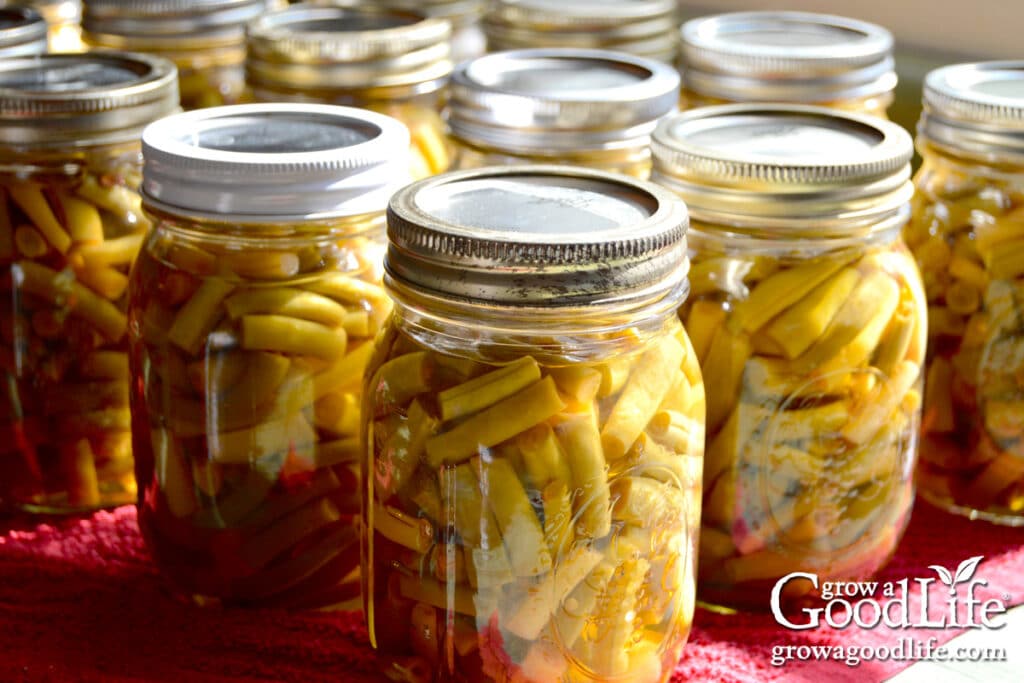
7. Avoid Overplanting
It’s easy to get caught up in the excitement of garden planning and plant more than you can manage. We’ve all been there. Those early spring dreams of overflowing baskets turn into midsummer overwhelm when everything ripens at once. Starting small and keeping your garden realistic will make the experience far more enjoyable.
Start Small and Grow Steadily
If you’re new to gardening, begin with a few raised beds or containers rather than an entire yard. You’ll quickly learn how much time watering, weeding, and harvesting actually take. As you gain experience, you can expand each year with confidence and a clearer sense of what works best for your space and schedule.
Think of your first garden as an experiment. Each season teaches you what thrives in your soil, what your family eats most, and how much time you truly have to care for it.
Understand Crop Productivity
Some vegetables produce heavily from a handful of plants, while others yield only once. Knowing which is which helps you avoid overplanting.
- Continuous producers: Tomatoes, peppers, cucumbers, beans, and zucchini keep producing all season. A few healthy plants will give you plenty.
- Single-harvest crops: Carrots, onions, garlic, beets, and cabbage are harvested once, so you may want to plant more if you rely on them for storage or preserving.
By balancing these types, you’ll have steady harvests throughout the season without feeling swamped all at once.
Plan for Real Life
Be honest about how much time and energy you can devote to your garden. It’s better to have a smaller plot that you can easily maintain than a large one that becomes stressful. Remember, gardening should fit into your life, not take it over.
If you travel often or have a busy summer schedule, stick to hardy crops that don’t mind a few days between waterings, or consider installing drip irrigation to simplify care.
Use the Space You Have Wisely
A well-planned garden can be incredibly productive even in a small area. Use vertical supports for vining crops, interplant fast-growing greens between slower-growing vegetables, and utilize succession planting to keep beds full without overcrowding.
Mapping your layout ahead of time (even with a quick sketch) helps you visualize spacing and prevent accidental overplanting. Related Reading: Planning Your Vegetable Garden: Mapping the Garden Beds.
Over the years, I’ve learned that more plants don’t always mean more food. Sometimes they just mean more stress. A smaller, well-tended garden will always reward you with healthier plants and a more enjoyable harvest. There’s nothing wrong with starting small and adding a little more each year. Gardening is meant to bring peace and satisfaction, not exhaustion.
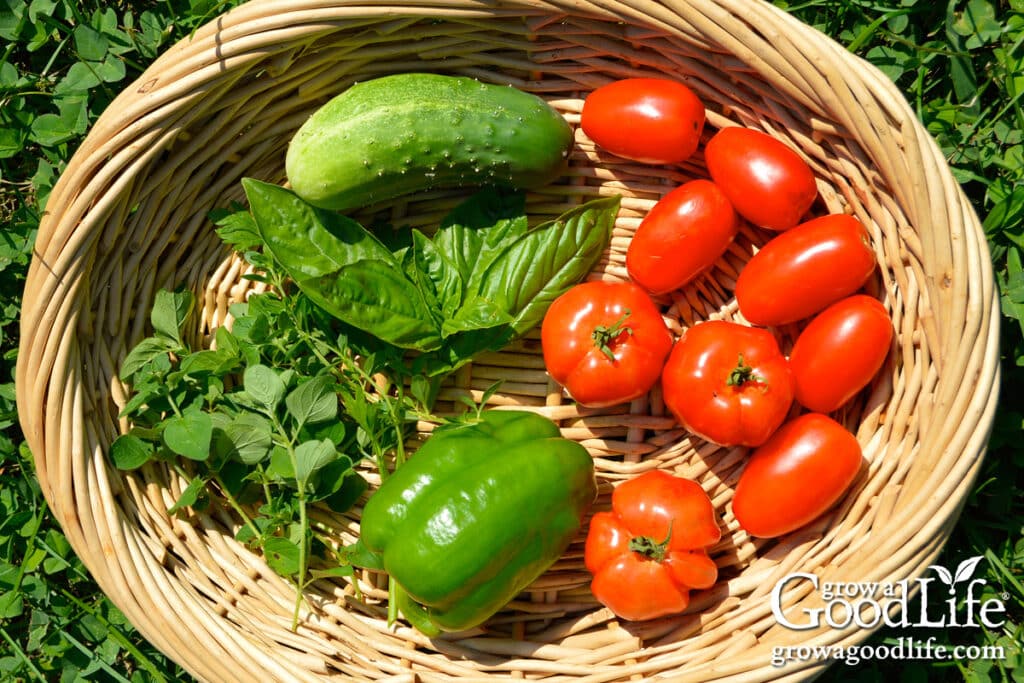
Grow What Brings You Joy
Gardening is as much about the experience as it is about the harvest. When you choose vegetables that fit your goals, match your growing conditions, and align with what you truly love to eat, the process becomes deeply rewarding instead of overwhelming.
Start small, focus on your favorites, and let your garden evolve as you learn and grow. Each season will teach you something new, such as a better layout, a more productive variety, or simply the joy of stepping outside to harvest dinner.
There’s a quiet satisfaction that comes from knowing exactly where your food comes from, how it was grown, and how good it tastes when it’s freshly picked. That feeling is the heart of every home garden.
So go ahead and dream, plan, and plant with intention. Grow what nourishes you, body and soul. Once you’ve chosen the vegetables you want to grow, the next step is turning your ideas into action.
More in This Series:
- Tips for Buying Seeds for Your Vegetable Garden
- How to Map the Garden Beds
- Make a Seed Starting Schedule
This article was originally published November 14, 2018. It has been updated and expanded to give you more tips to help you choose what to grow in a garden.
Good planning is key to a successful vegetable garden
Whether you are new to growing your own food or have been growing a vegetable garden for years, you will benefit from some planning each year. You will find everything you need to organize and plan your vegetable garden in my PDF eBook, Grow a Good Life Guide to Planning Your Vegetable Garden.

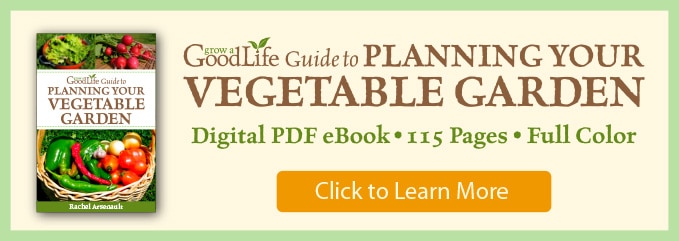
thank you so much for these articles. This will be my first garden, so your input has helped me decide to start small. I am just gonna do some salad staples, but I might try my hand at grapes for canning as well. Very excited!!
These are still great tips! And I’m loving the information in all the links you posted! I especially like your points about the high value crops. My biggest challenge is starting small. I’m loving all your posts. Thanks for all your great content not only in this post but also all the others!
Thank you, Lauren! Starting small is so difficult especially when you are excited to get going.
Thank you so much for all the tips! It helps me get through our harsh winter when I get to dream and plan our summer garden!
Great tips for planning a vegetable garden! I appreciate all the effort you used to make this great post.
Love this post, pinning for later 🙂 My husband and I can’t wait to start our garden. I think we need to start with all the ingredients for salsa!!
Some great practical tips here thanks! Focusing on growing veggies so you don’t have to buy store bought ones that are high in pesticide residue is always at the fore front of my mind 🙂 Thanks for sharing!
My husband is the gardener. But I definitely give input on what we grow 🙂 And then I deal with it all.